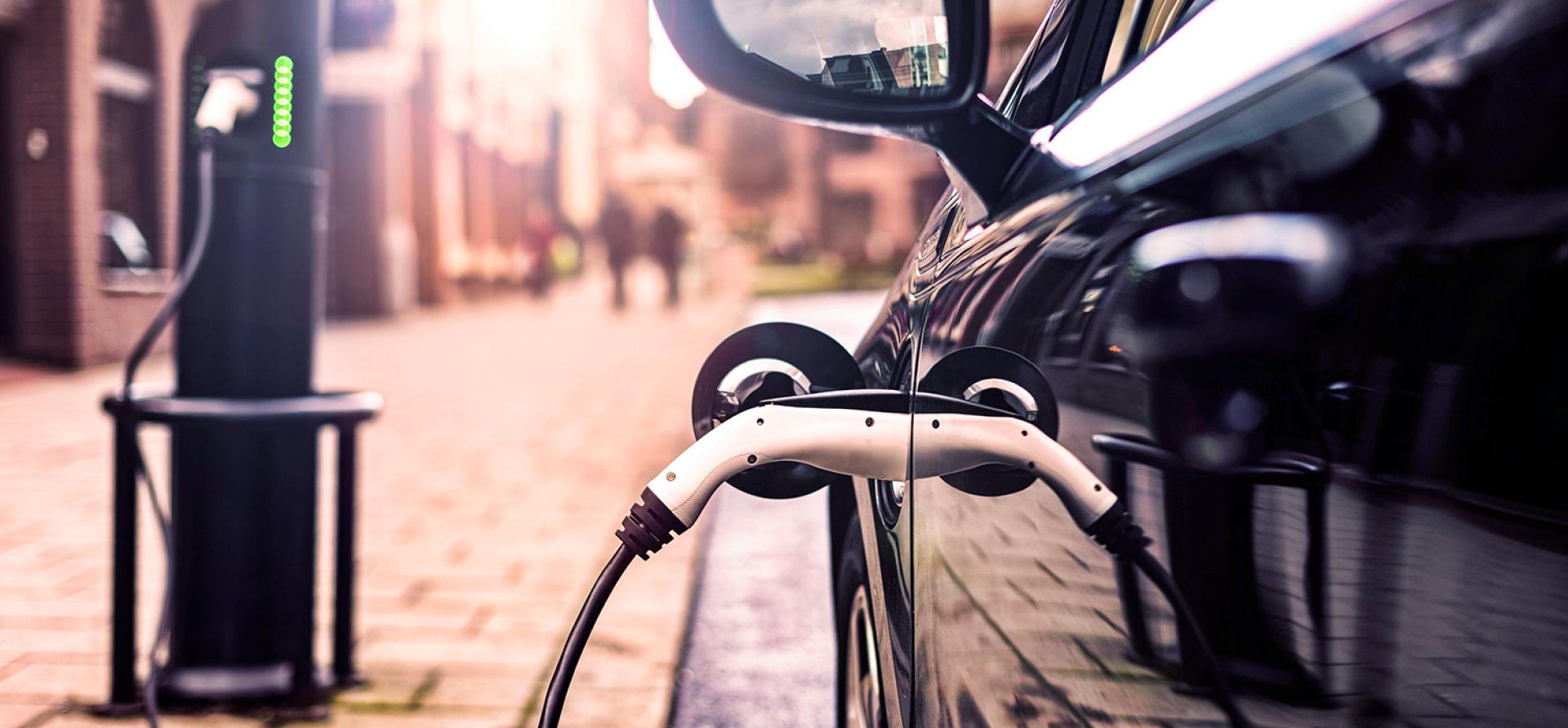
Key Findings
In Indonesia, transport is the single largest final energy-consuming sector, using imported oil and accounting for roughly a quarter of energy emissions. Legacy carmakers command a predominant, if not near-absolute, status in Indonesia’s market, but their electric plans remain lackluster.
Bold fuel economy standards and other active government policies are required to restrain demand for internal combustion engine fuel and make legacy automakers work toward more efficient EVs.
It is important to clarify the differences among the various electrified vehicle types, and to understand the real-world fuel savings and emission reductions as they can differ from claimed figures.
Executive Summary
The sounds of electric vehicles (EVs) whizzing at the G20 Bali summit venue late last year was a display of Indonesia’s ambition, with emphasis on fully electrified battery EVs (BEVs). Nevertheless, while all eyes were drawn to the flashy new EV showcase, a quieter room of discussion has been assembling to consider the electrification plans of so-called legacy automakers, those which hold a predominant role in the market. The direction of these legacy players matters, particularly as most of them have rather muffled plans for going electric.
Transport is the single largest final energy-consuming sector in Indonesia, outstripping industrial usage and accounting for about a quarter of energy emissions. EVs present a new pathway as they consume energy more efficiently, using 60% to more than 75% of energy from the grid at the wheel, compared to the internal combustion engine vehicle’s (ICEV) 12% to 30% efficiency. They also reduce emissions; several studies have concluded BEV life-cycle emissions are lower, even with coal-dominant power grids.
Given critical underinvestment in the domestic oil industry, reliance on imported oil for transport will grow, and reconciling the 3% annual decline in oil production with the rise in fuel demand remains improbable. As oil import bills rise alongside decarbonization aims, EVs will be crucial in curbing oil demand growth in tandem with the parallel ambition to adopt renewables.
Stakeholders should note a number of critical points about the market:
- The current focus on BEV growth relying on new entrants leaves a gaping detail: legacy automakers’ electric plans for emerging markets remain muted. Five automakers command 92% of the light four-wheeler (4W) market, while two companies hold 96% of the two-wheelers (2Ws). Such is the high market concentration which can make or break the EV ambition. New entrants are poised to grow, but incumbents will likely put up resistance. Toyota’s 4W BEV sales comprised 0.16% of its global business, and Honda’s electric 2W sales are largely negligible. With strong reliance on hybrid cars, efforts are also ongoing to redefine electrified vehicles in the public mind. While the industry is voicing the challenges of making EVs affordable in Indonesia, discourse about small low-cost EVs is evolving in Japan – the origin of most legacy automakers – in response to the Chinese EV threat on their turf.
- The flood of public discourse on electrified vehicles risks blurring the line on the vast differences between BEVs and various hybrids. The conventional hybrid (HEV), marketed for more than 20 years, is ultimately powered by petrol, while the benefits of plug-in hybrids (PHEVs) are highly dependent on users’ charging behavior. Real-world assessments further underscore wide gaps between actual benefits in fuel savings and emissions and the claimed figures. Potential discrepancies have also been noted between emission reduction benefits outlined by the government and other sources.
- Significant excess production capacities in both 4Ws (48%) and 2Ws (36%) will continue to haunt Indonesia’s electric vehicle ambition. Legacy automakers are heavily invested in ICEV production although Indonesia’s ICEV sales peaked in 2011-14 and have not recovered to a similar level to date. Globally, ICE car sales also peaked in 2017, while developed countries are planning ICEV phaseouts, so the risk of legacy players entrenching ICEV products deeper in emerging markets will likely rise.
- Inconsistent policy in controlling oil demand growth: Indonesia has been lagging in fuel economy progress; for example, new light-duty vehicles use on average 40% more fuel than in India. The absence of mandated fuel economy standards or measures to control new vehicle growth suggests that the government is leaning toward light-touch regulation, leaving the automakers largely unscathed. Fuel economy serves as a dual-purpose measure as emissions and fuel usage are directly correlated. However, fuel economy plans are largely absent from Indonesia’s long-term decarbonization strategy or Nationally Determined Contribution (NDC). Recently, the country has made positive moves toward progressive taxation of vehicles based on emissions and fuel consumption.
While having some of the most ambitious EV targets, Indonesia is lagging behind its Southeast Asian peers. Vietnam leads electric 2W sales by a significant margin, while Thailand is poised to lead electric 4W adoption. Analysts’ mild outlook on Indonesia’s EV growth should serve as a reminder that the current trajectory is insufficient to meet the ambitious targets. Thailand’s role as the region’s leading car manufacturing base further raises the stakes for Indonesia’s auto industry and future export markets.
To seriously embark on its EV ambition, Indonesia needs to address the giants in the room. The government and stakeholders should pay close attention to the following:
- Active policy is necessary to restrain ICEV fuel demand growth through mandated targets and clearer policy commitments. Mandated targets such as aggressive fuel economy standards should be set up immediately. The push to promote EVs will need to be combined with pull measures to restrain the ICEV market, including through fuel economy, which China and India have adopted. This will help pressure the legacy automakers to better align their production toward more efficient vehicles. Imperfections of the policy model should be evaluated comprehensively for effective adoption. A longer-term phaseout of ICEVs, coupled with realistic near to mid-term targets, should be seriously considered to improve the credibility of Indonesia’s BEV ambition. Embedding the direction into high-level policy documents, including Indonesia’s NDC commitment, would further strengthen the signal.
- Government support of legacy automakers should facilitate their transition through incentives and access to resources. Incentives should be considered even if these give established players leverage relative to new entrants. This is also salient for the 2W segment, where Indonesia holds a significant market, comprising close to a quarter of Honda’s and Yamaha’s 2W unit sales globally.
- Legacy automakers and their domestic entities must better align with the country’s need to decouple from oil demand growth and to reduce emissions. Their industrial and market prowess could be important in electrifying future road transport in many emerging markets which face similar challenges to Indonesia. Domestic automaking entities are expected to play an active role in shaping up their principal’s views of EV transition in Indonesia.
- The government should pay close attention to real-world fuel savings and emission reduction benefits of various electrified vehicles in considering support. Comprehensive assessment and clear public disclosure are even more critical, considering the wide array of electrified vehicles being promoted and vying for incentives.
Without the government or industry openly addressing these market concerns, the public will raise serious questions about whether Indonesia’s current BEV buildout ambition is aimed at a more efficient and lower-emission domestic transport sector, or targeted largely for export.
The legacy automakers are at a critical juncture. Automotive R&D and investments in Japan are significantly higher than other industries, underlining the country’s large bet on the sector. There will certainly be space for various types of EVs, but each path must be assessed openly while evaluating the alignment between Indonesia’s aim and the different interests at play. It is noted that while legacy automakers have stressed the need to offer consumers diverse mobility choices, their all-electric options remain largely absent from the table.
Ultimately, EV adoption should not be perceived as a single overarching solution for the transport sector, where public modes of traveling will remain key to addressing both energy demand and emissions. In the meantime, however, the direction of legacy automakers should not be left unchecked, as the position they take can be very influential.















